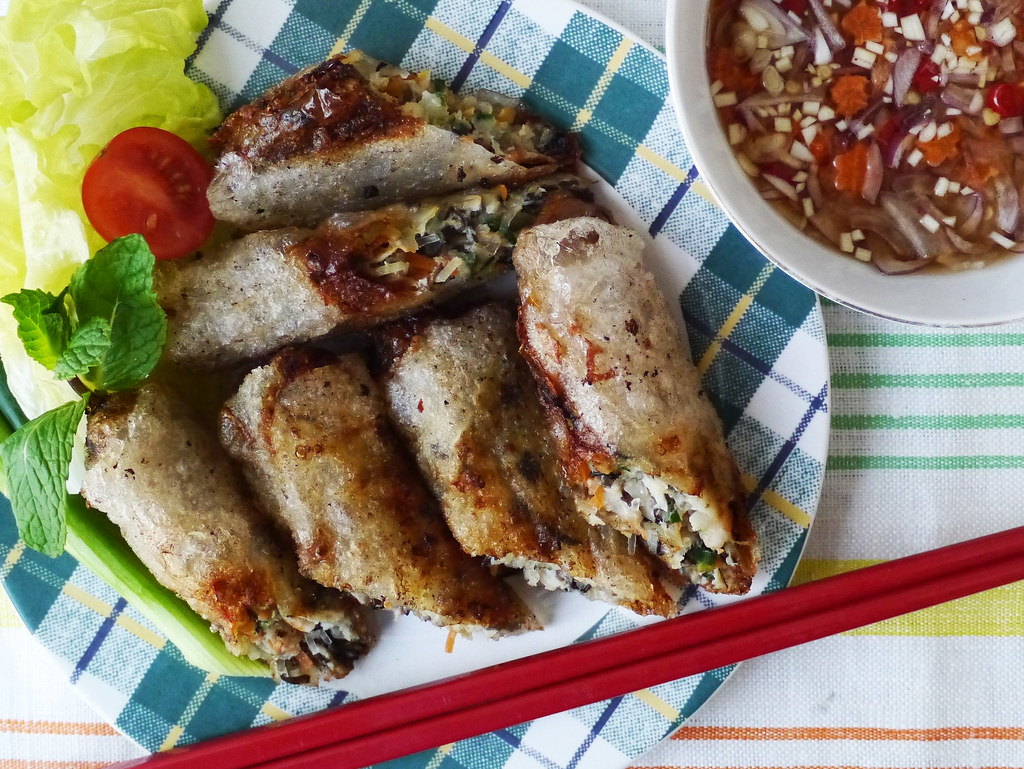
These delicious fried rice paper rolls are crispy, crunchy and chewy all in one. A flavoursome filling combined with a textured skin, they make an appetizing and addictive meal. Enjoy with the dipping sauce and a plate of mixed veg and herbs.
[dropcap]According[/dropcap] to my taste buds, hot fried food are pretty hard to beat and fried rice paper rolls are no exception. When we eat out at Vietnamese restaurants, we almost always order fresh rice paper rolls as an entree, and their delicious fried counterpart are also hard to pass by. Known in Northern or standard Vietnamese as nem rán (“fried roll”), and in the southern dialect as chả giò (“minced pork sausage”), fried rice paper rolls are a popular Vietnamese specialty world-wide. They are perfect to eat as an appetizer or a main meal when complemented with a delicious, savoury dipping sauce (“nước chấm”), cool rice vermicelli noodle (“bún”) and mixed garden greens. 1
There are many variations to Vietnamese fried rice paper rolls. The mixture for the filling can be a combination of minced meat (pork, prawns or crab meat are popular), black fungus, bean thread noodle, shredded carrot, spring onion, and other ingredients and seasoning. What makes them unique and so tasty (compared to traditional fried spring rolls) is their namesake. When they’re fried, the rice paper rolls turn into blistering, crackling, crispy and crunchy, golden brown batons of deliciousness. Mmmmmm. To me, they’re almost the hybrid offspring of a fried spring roll and a fresh rice paper roll, although with more savoury traits of the former parent.
Many years ago, when I worked at my sister’s Thai restaurant, I helped her prepare and wrap a great number of both spring rolls and fresh rice paper rolls. It was with her (and both of my parents) that I initiated my culinary journey. My first taste of fried rice paper rolls however (if I remember correctly), was at my sister-in-law’s Thai restaurant (also many years ago). She had made them especially for us to take home, and I remember how impressive they tasted and how wonderful they crunched! Forward a few years and you can imagine my excitement and happiness when I discovered and tasted these fried rice paper rolls in Vietnamese restaurants. They’re affordable, popular and can be found on nearly every Vietnamese menu. They’re frighteningly easy to eat and dangerously addictive, and as I’ll show you, they’re also quite easy to make at home. Although, to be completely honest, my example in this post did not turn out as good-looking as I had hoped for.
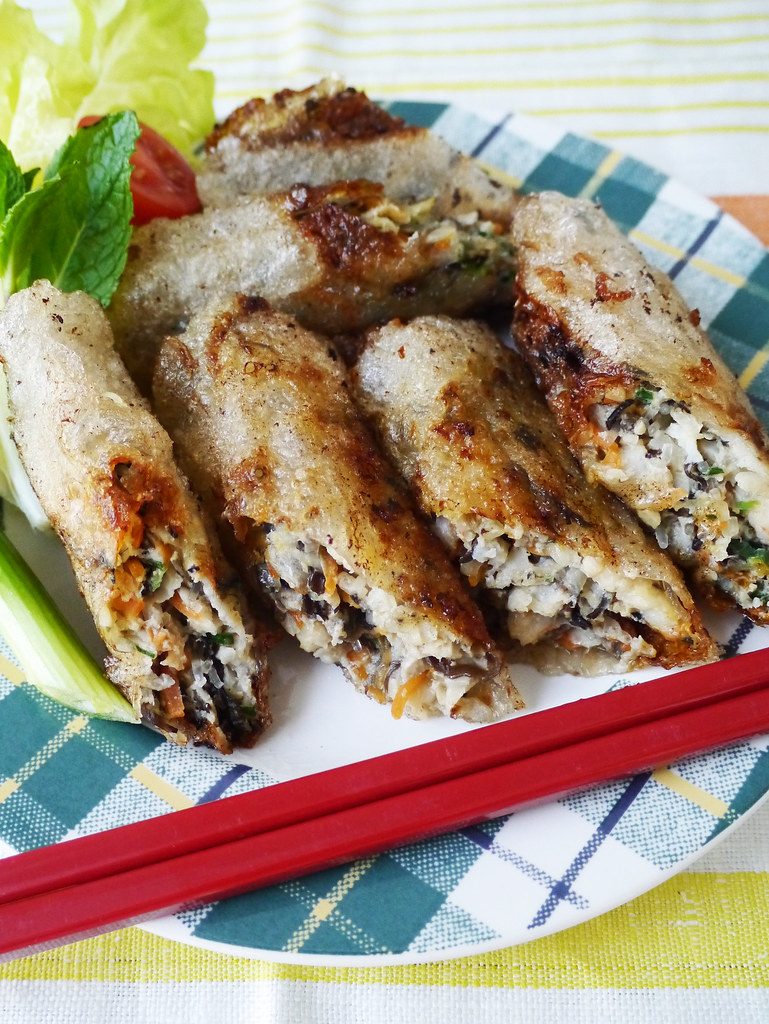
If you don’t mind repetitive chopping, slicing and wrapping, making spring rolls and rice paper rolls is quite an easy (and enjoyable) process. If you’ve made them before, you’d know the satisfaction of immediately munching on these ‘fruits of your labour’ once they’re done. You’ll also know that you can customize the filling mixture to suit your taste, requirements or what ingredients you have available. As Lorraine commented about how the Lao larb croquettes would be great made in a group, making spring rolls or (fried) rice paper rolls would also be a fun and satiating way to spend happy, quality time with good friends and family, to reconnect or touch base. There’s only one thing better than eating these fried rice paper rolls, and that is to share them with the ones we cherish.
These fish and prawn fried rice paper rolls are a delicious alternative on a Vietnamese classic. I created the following recipe based on the spring roll and fresh spring roll recipes that I had learnt from my sister many years ago, and the number of fried rice paper rolls that I have eaten over the years. I also used Luke Nguyen’s recipe for Hanoi crisp parcels with vermicelli salad (bun nem ran) as a reference and guide. I tried to apply my current recurring (often preached but not always practiced) mantra of keeping things simple in this recipe, but I couldn’t help but not include some of my favourite ingredients including button mushrooms, water chestnuts and Asian shallot. I also thought about adding coriander and ginger but decided to quit while I was ahead with these two ingredients. 2
As mentioned, these fried rolls were not a complete success. Although, to say that they were a complete disaster would be incorrect. The rice paper rolls were super sticky and difficult to shallow fry. When they were in the oil, a lot of them kept sticking to each other, the metal tongs or the surface of the pan which resulted with many of them having holes and inevitably dark burnt areas. Alas. The later ones though, which were fried at a slightly higher temperature were markedly less sticky and easier to turn. I hope you find this observation helpful, if you decide to give this recipe a go.
Nonetheless, as much as I wish they looked prettier and more appetizing, I shouldn’t judge a book by its cover because as my partner, our canine taste tester and myself can vouch, these fried rice paper rolls tasted truly delightful – burnt bits, holey bits and all, especially when complemented with the dipping sauce and side salad of lettuce and herbs. I hope you’ll give these delicious rolls a try and have better luck than me when frying them. Ăn ngon nhé and Chúc ngon miệng. 3
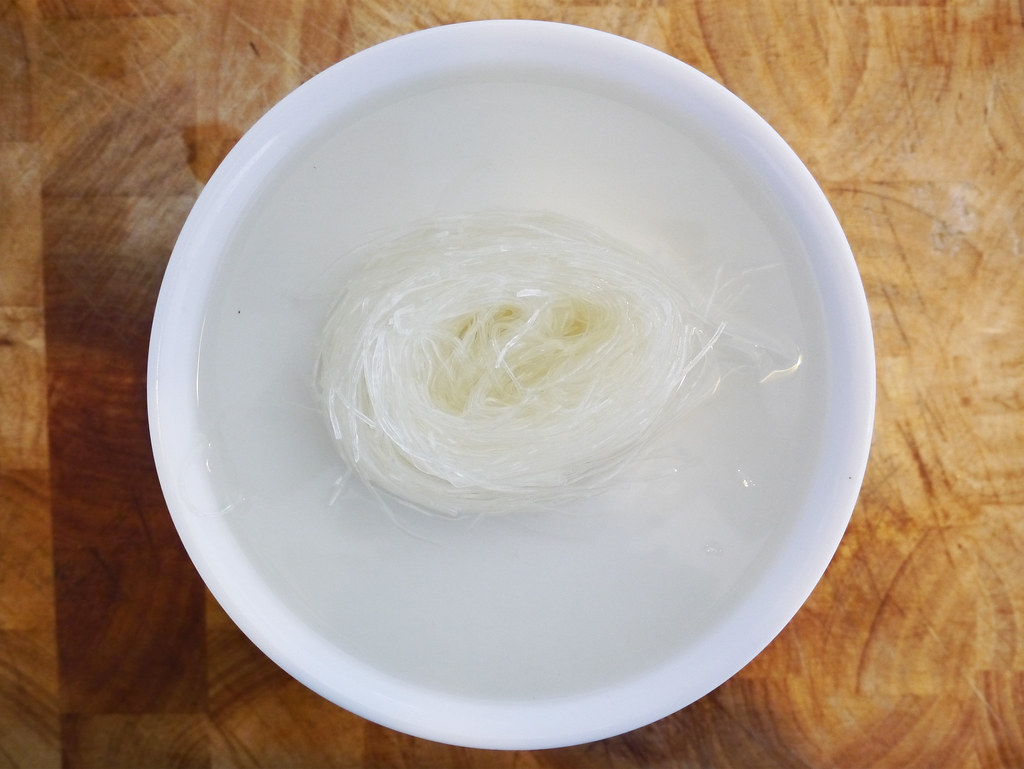
Place the bean thread noodles and black fungus into separate bowls, add warm water and soak them for about 30 minutes to rehydrate them.
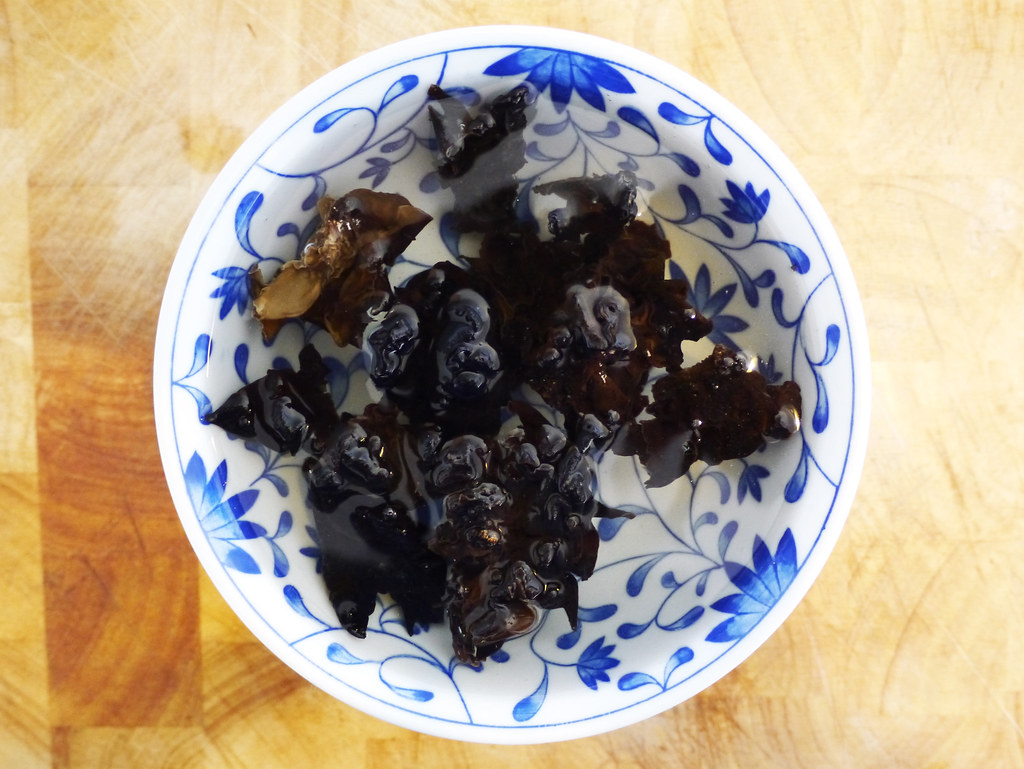
Black fungus (Auricularia sp.)
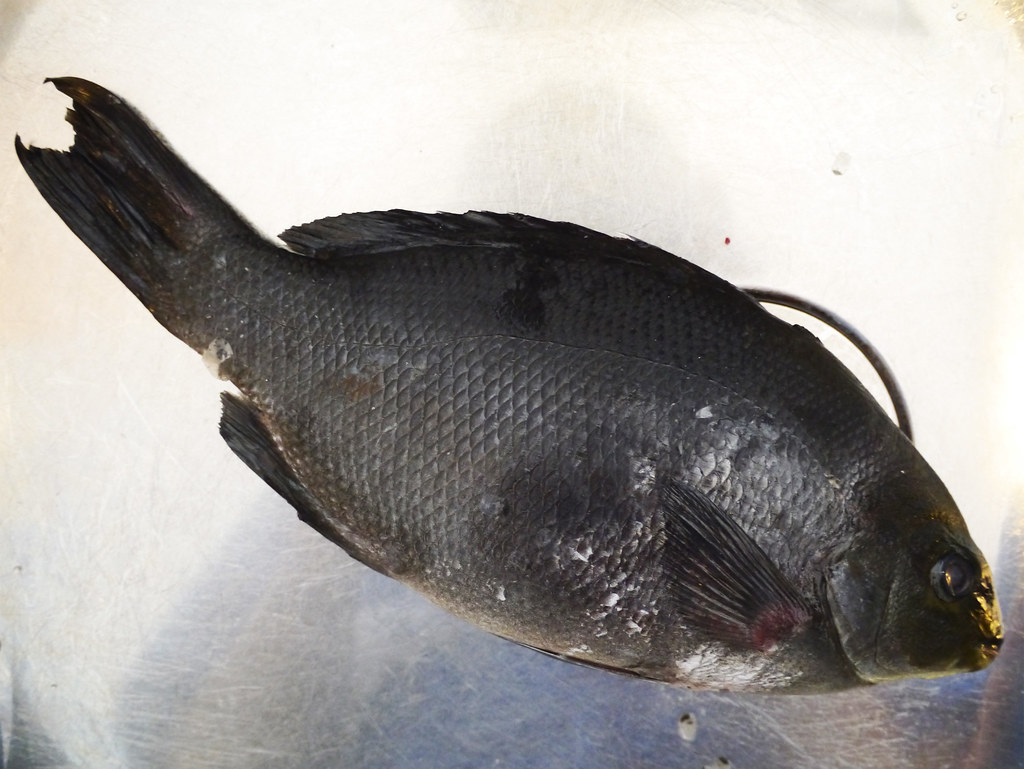
Black fish – defrosted.
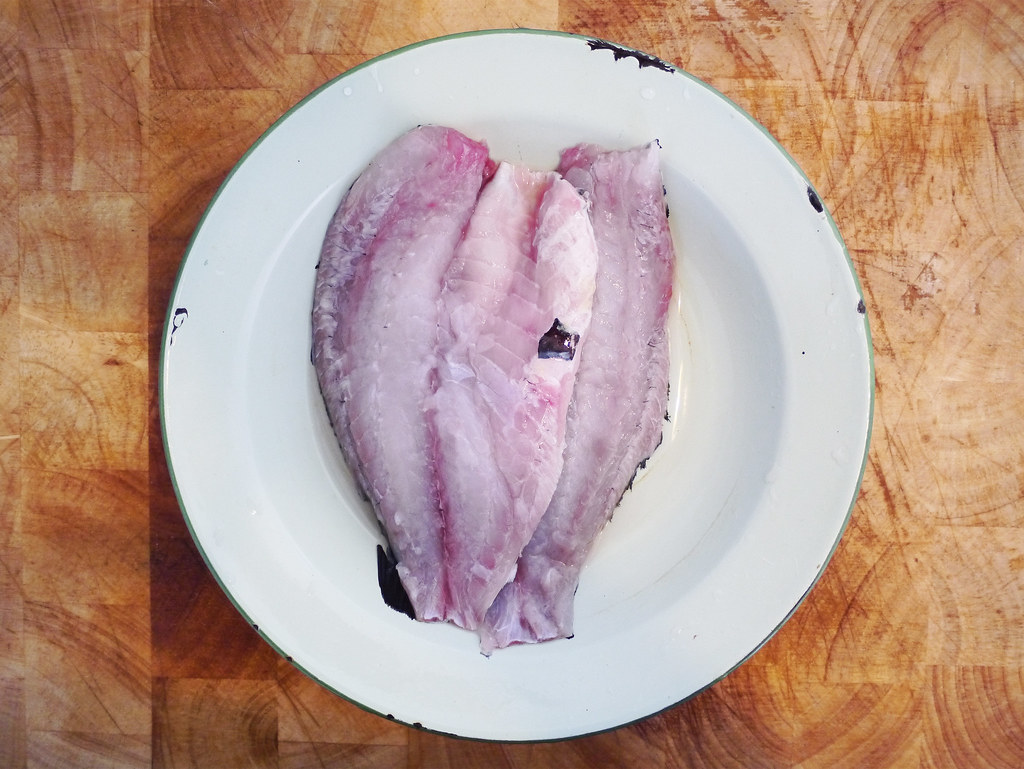
Prepare the ingredients for the filling mixture: Remove the bones and skin (optional) from the fish fillets.
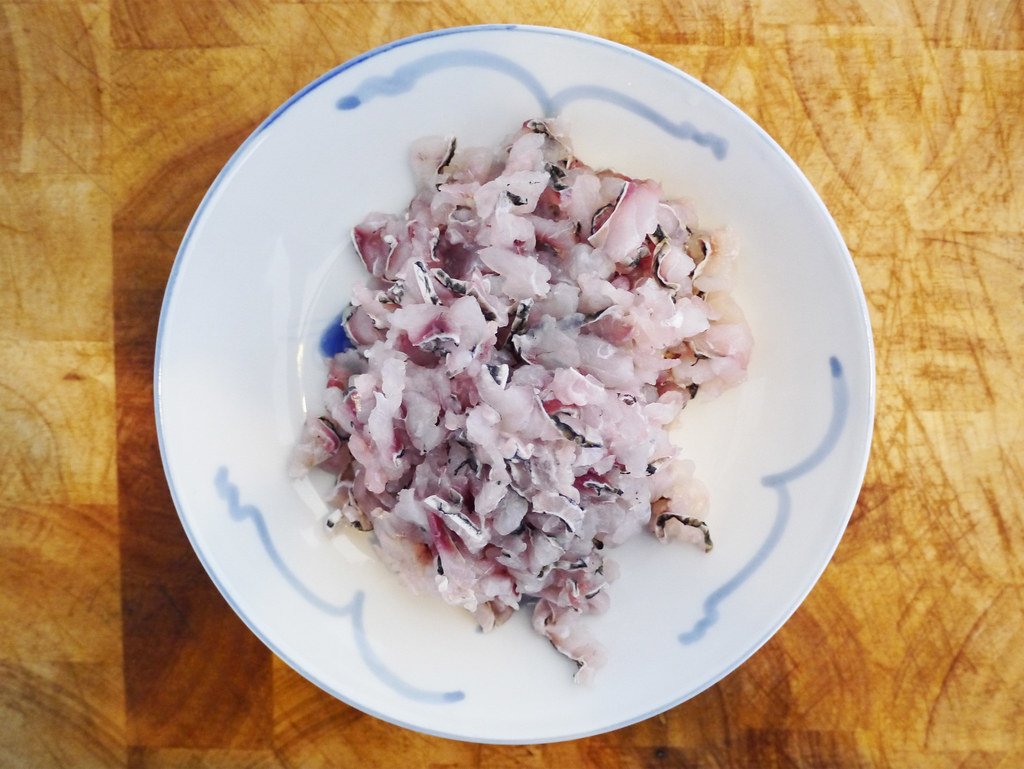
Cut the fish fillets into 2 cm strips and then thinly slice into slivers.
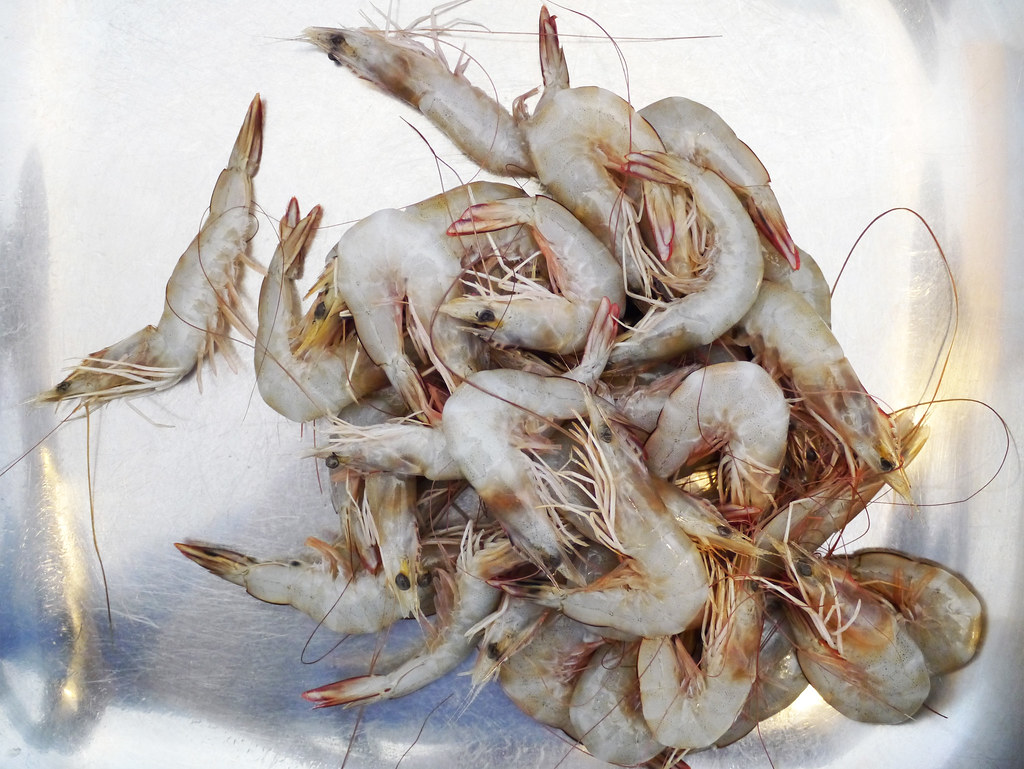
Banana prawns

Remove the shell and devein the prawns, then thinly slice them into slivers.
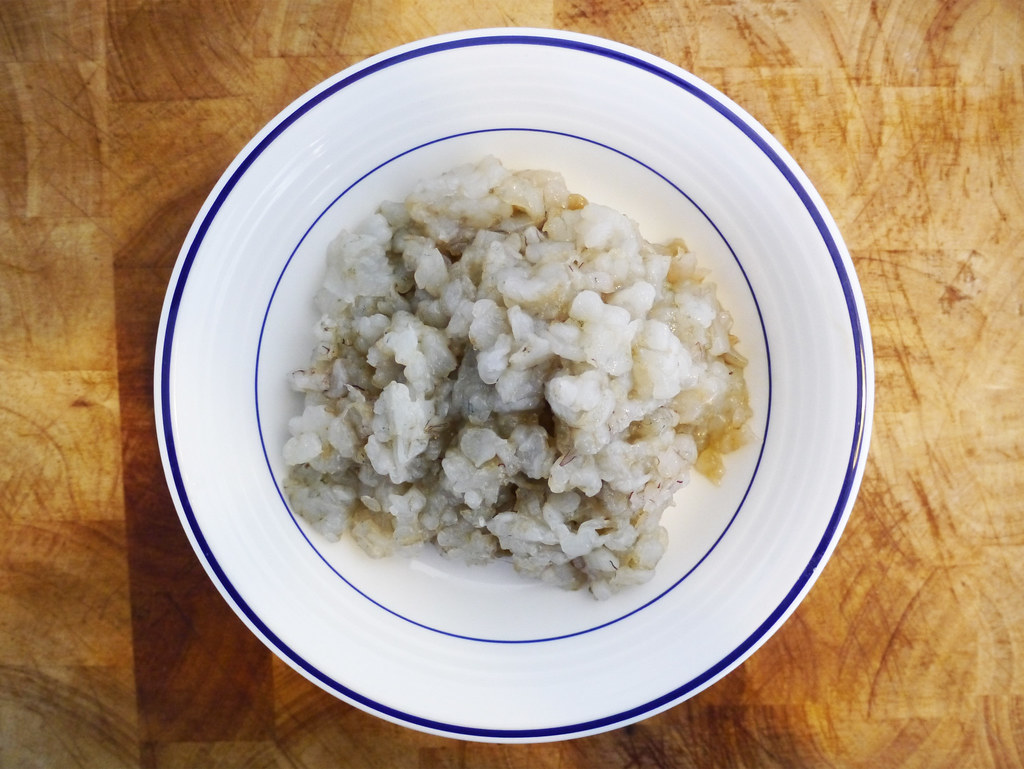
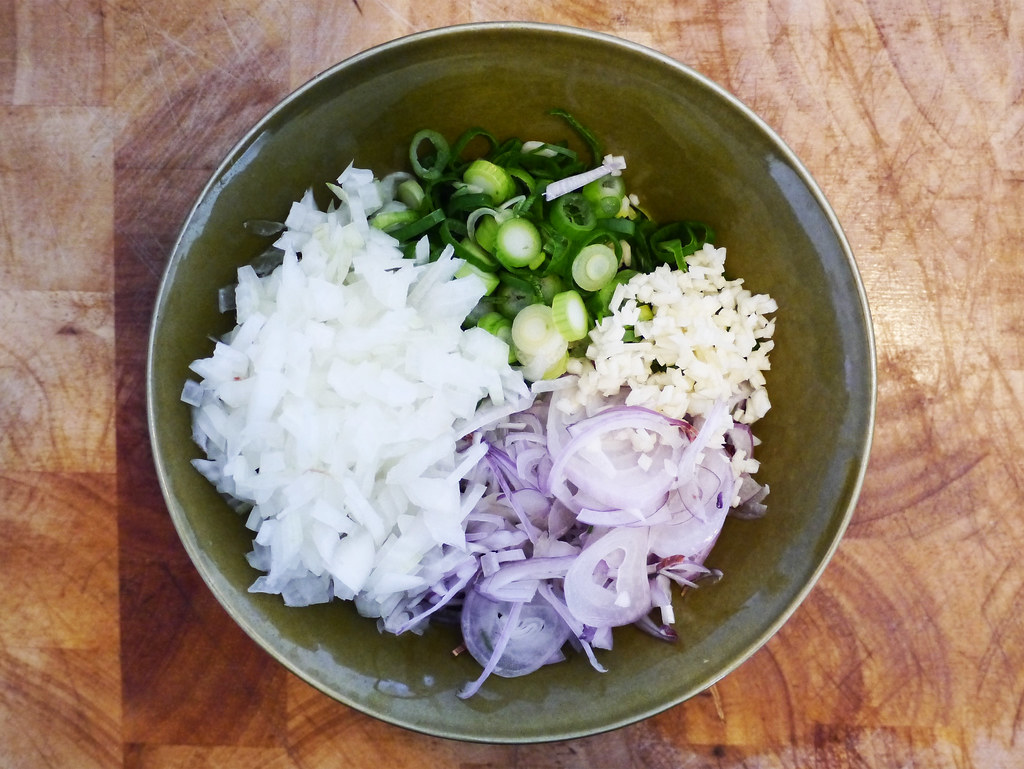
Wash, cut off the root and thinly slice the spring onion. Peel, cut off the root and thinly slice the Asian shallot and onion. Peel and finely dice the garlic.
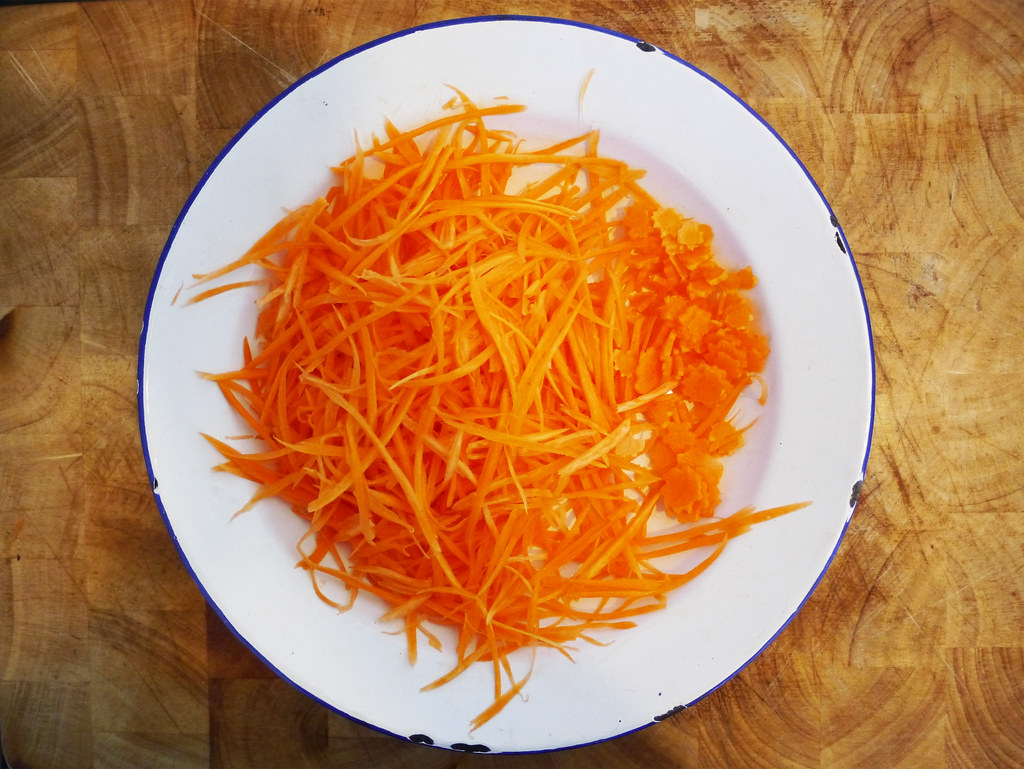
Peel and shred the carrot. Thinly slice the core ‘log’ of the carrot into ‘flowers’ and reserve to use in the dipping sauce.
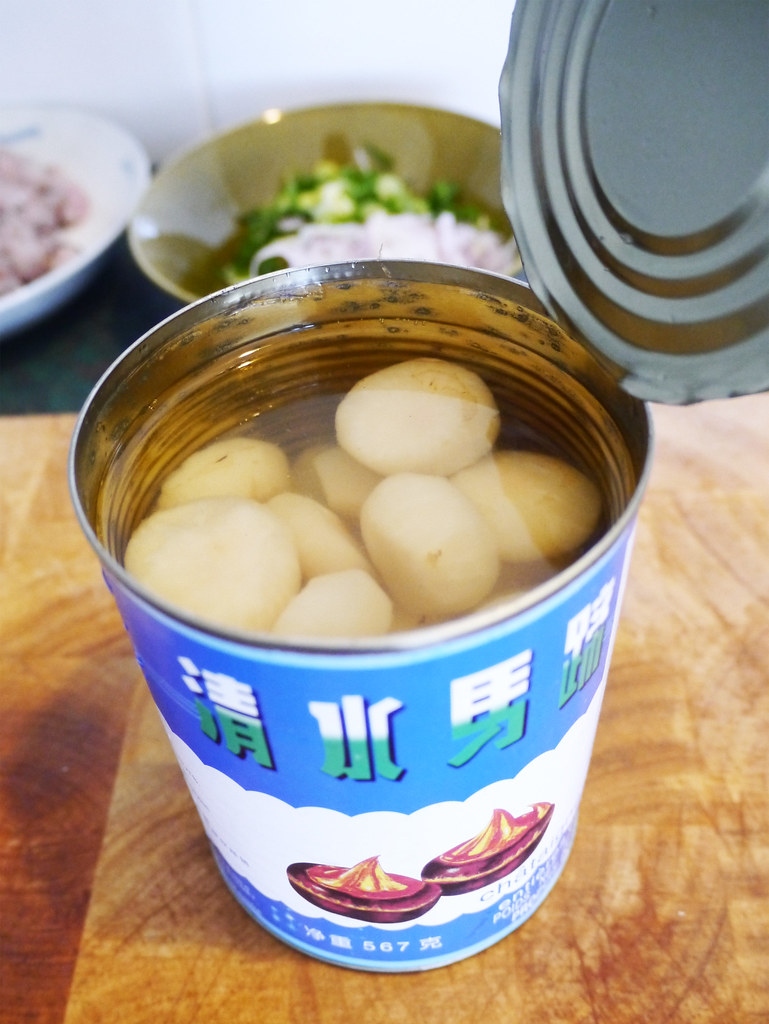
Water chestnuts
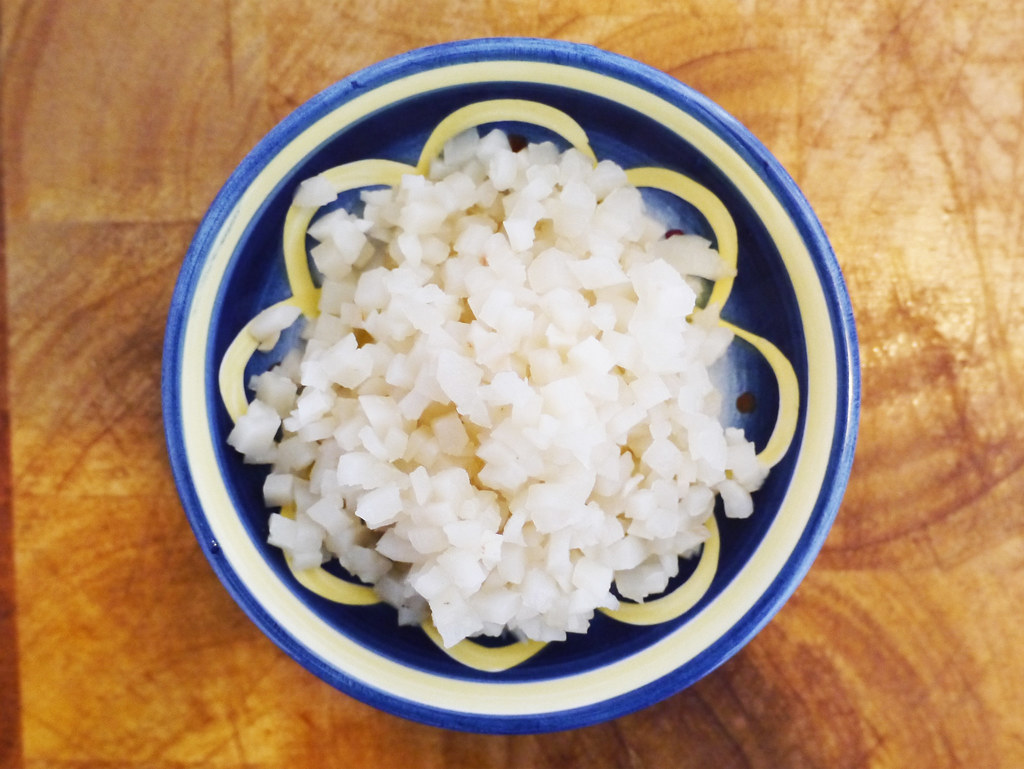
Finely dice the water chestnuts.
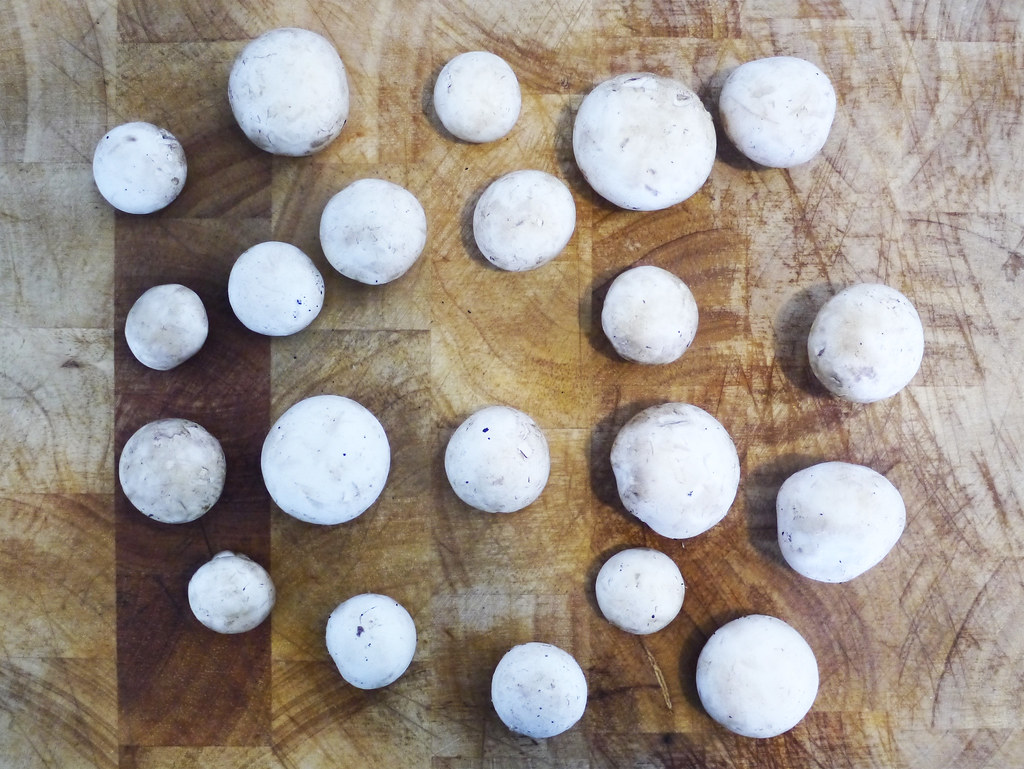
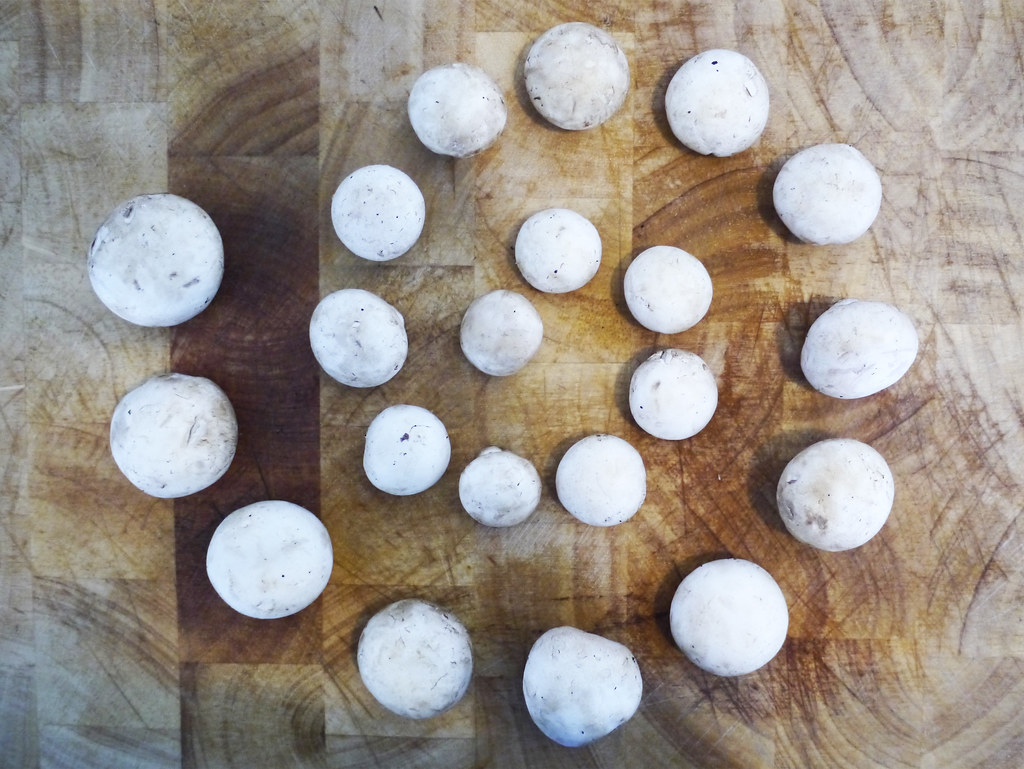
Finely chop the button mushrooms.
Lol – I must’ve been quite mesmerized by this spiral of button mushrooms because I forgot to take a photo of them chopped up.smile
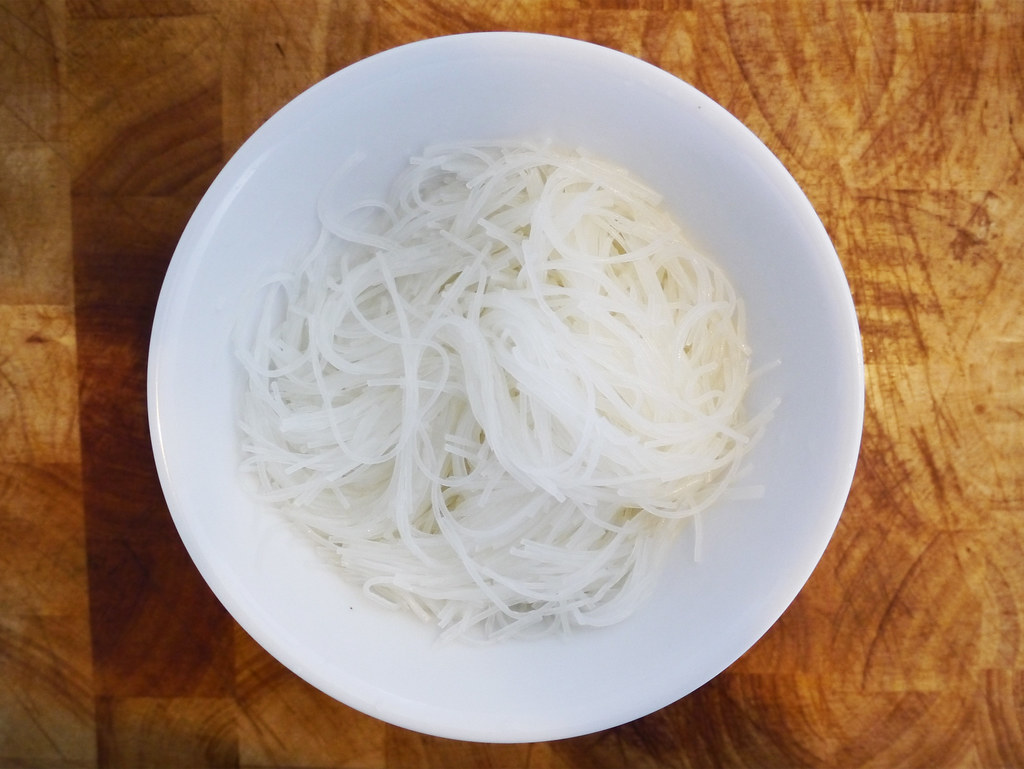
When the bean thread noodles are rehydrated, remove them from the water and cut them into 10 cm lengths with scissors.
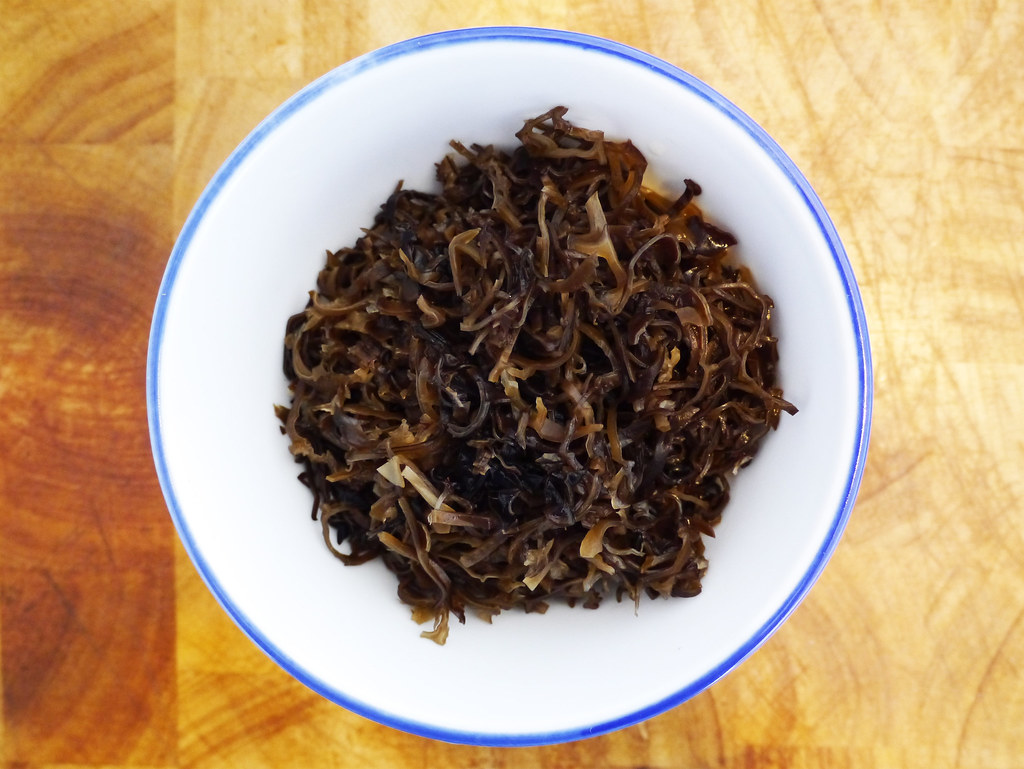
When the black fungus are rehydrated, remove them from the water and cut off their tough root section, then thinly slice them into slivers.
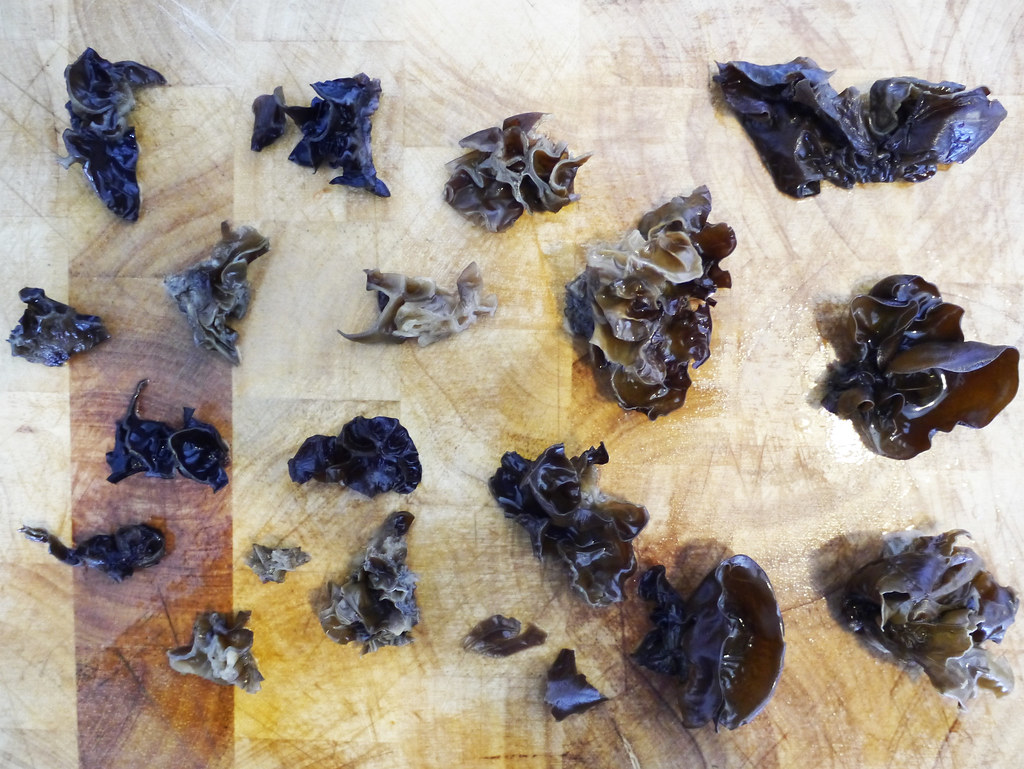
Flying black fungus collage with rehydrated whole black fungus on the right and root segments/remnants on the left.
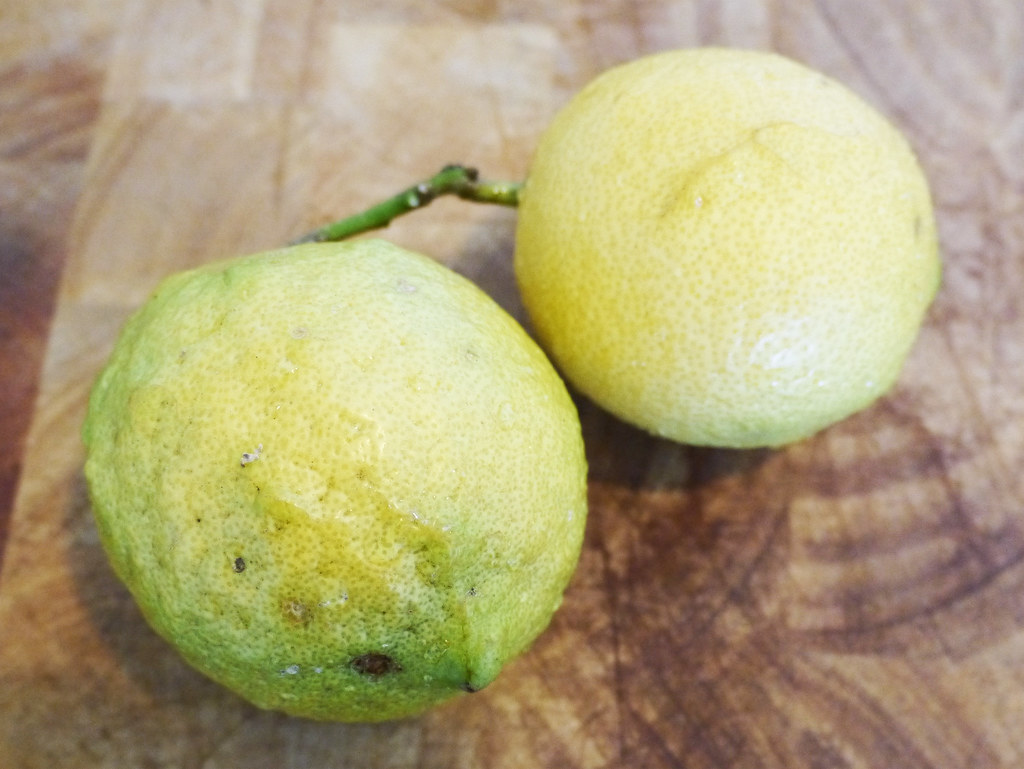
Freshly picked lemons from the garden.
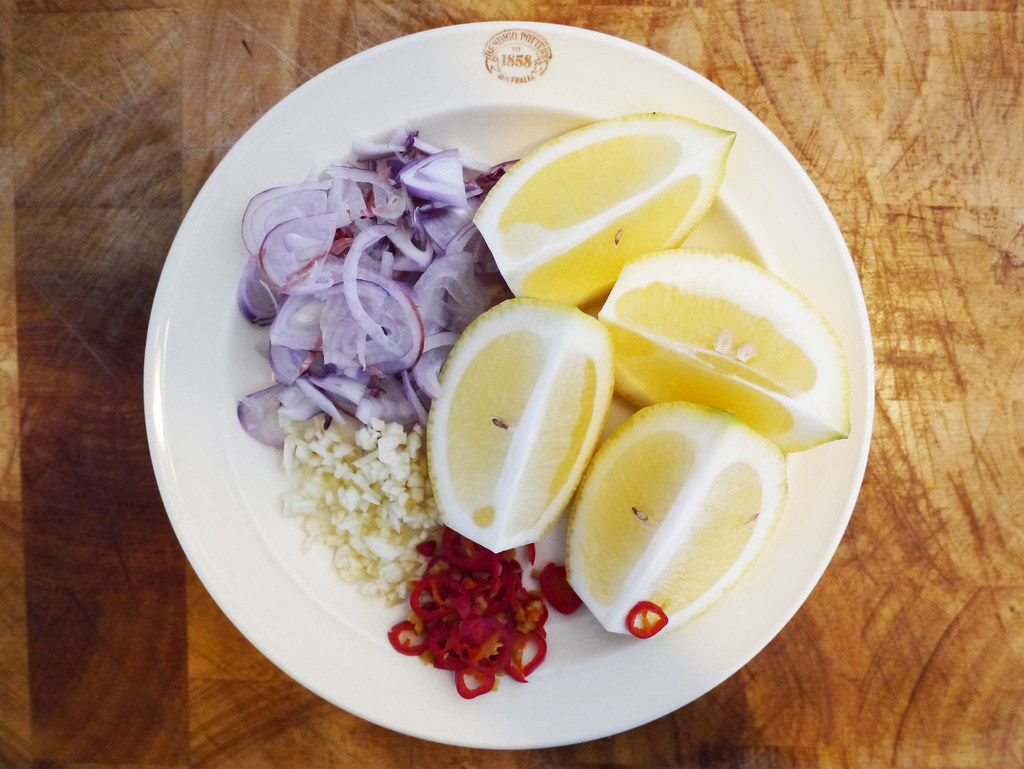
Prepare the ingredients for the dipping sauce: Thinly slice the chili. Finely dice the garlic. Peel and thinly slice the Asian shallot. Cut the lemon into wedges. Put these ingredients aside. The sauce is best when made just before serving.

In a large mixing bowl, add the fish, prawns, spring onion, Asian shallot, onion, garlic, carrot, chestnuts, bean thread noodle, black fungus, button mushrooms, egg, fish sauce, sugar, salt and pepper, and combine well together with a spoon. Put aside.
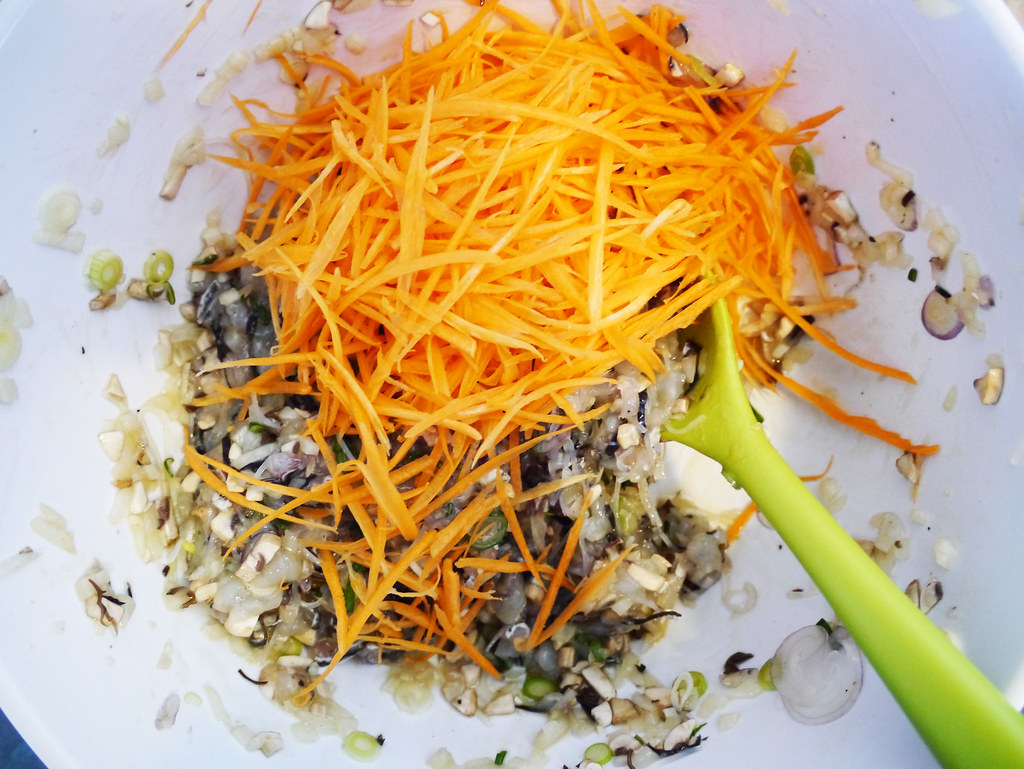
Don’t forget to add the shredded carrots like I did. Oops – just in time.
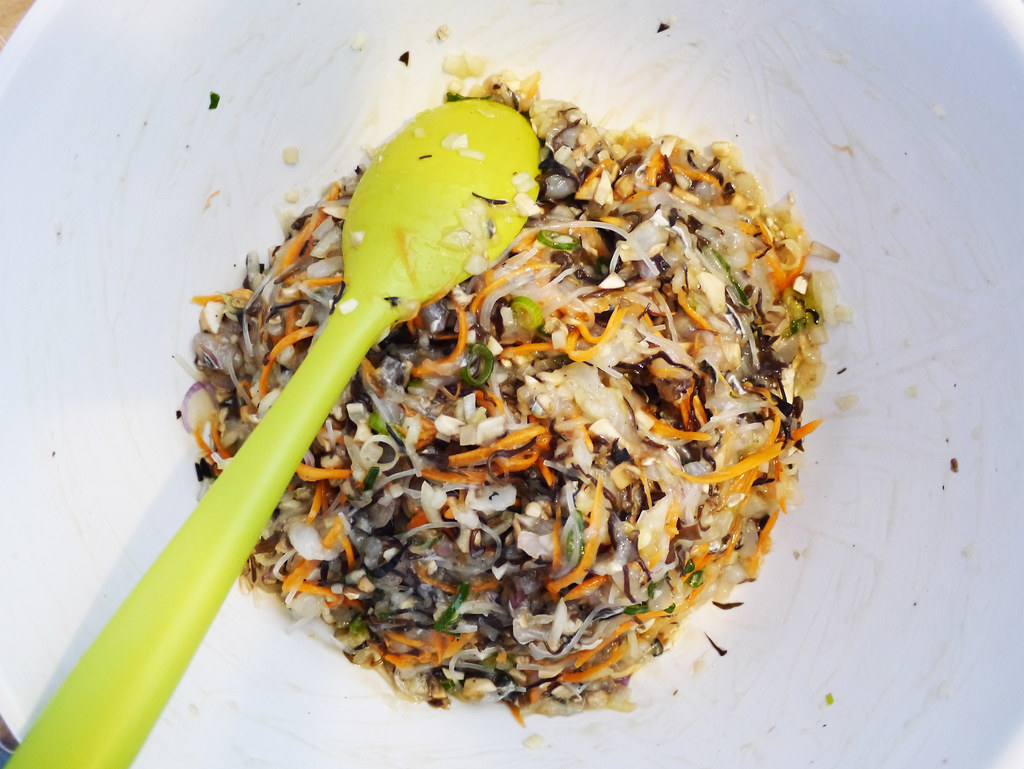
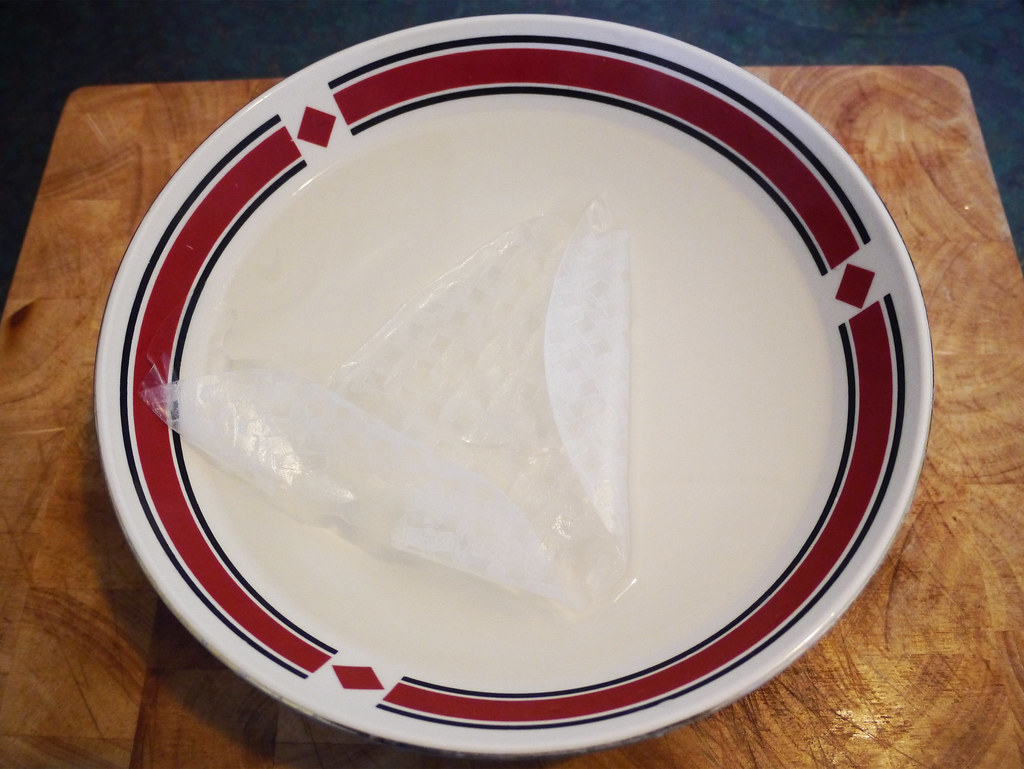
Prepare a large bowl with warm water to soften the rice paper and a plate to wrap the rice paper on.
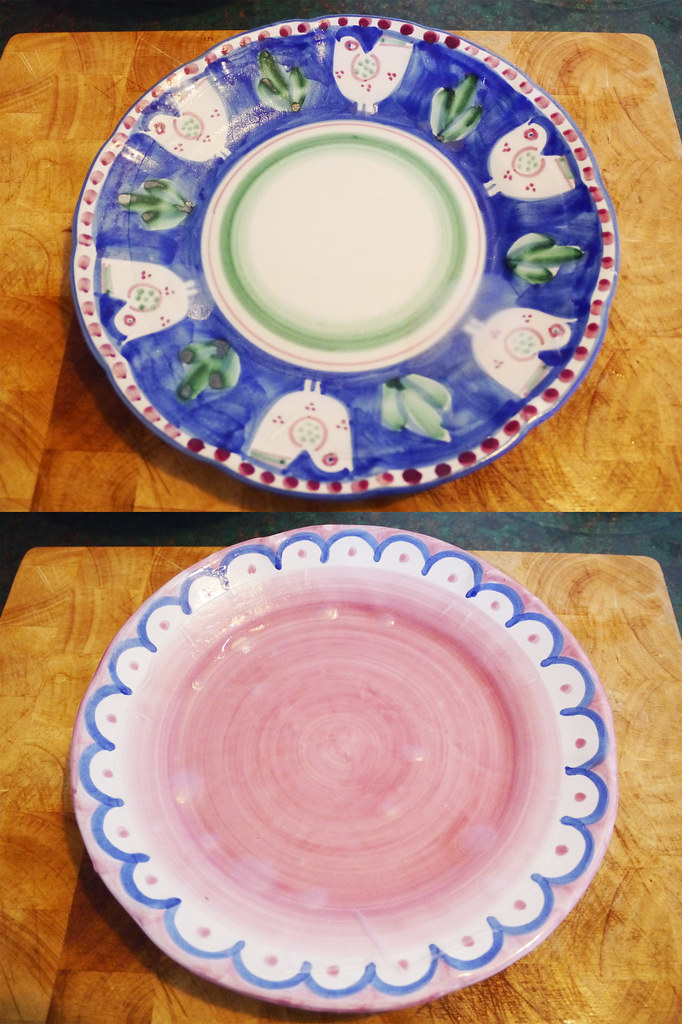
Wrap the rice paper rolls (as per photo instructions): Slide a sheet of rice paper into the bowl of warm water to soften it. When it is softened, remove from the water and lay it flat on the plate.

With the plate and rice paper in front of you, place about 1 1/2 Tablespoon of the filling/mixture about 1/3 of the way up on the rice paper. Evenly spread the mixture out horizontally to form a log but not all the way to the edge.
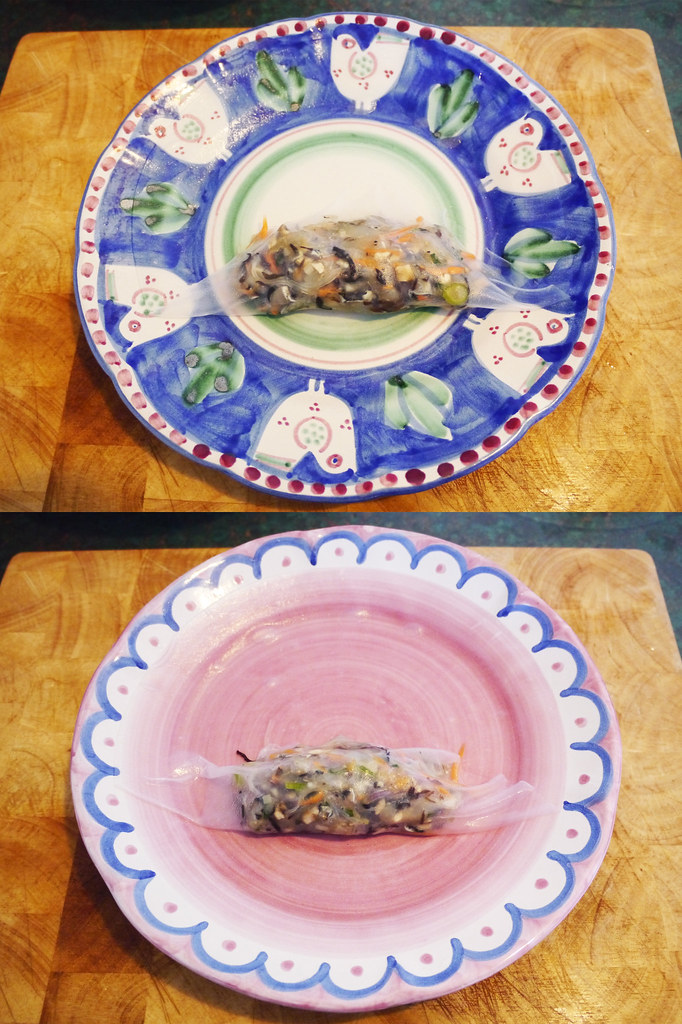
Fold the edge of the rice paper closest to you over the filling to cover it.

Fold the left and right edges of the rice paper in to cover the sides of the mixture and form neat vertical sides.
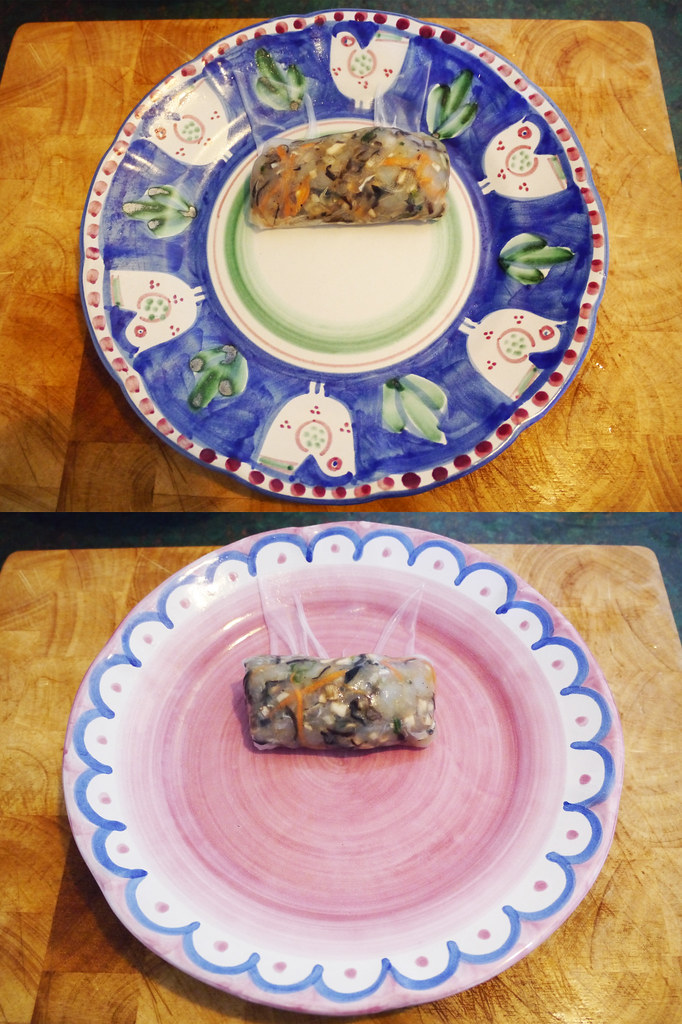
With your fingers firmly pressing the filling in place, gently and neatly roll the filling forward to the top edge of the rice paper to complete the roll.
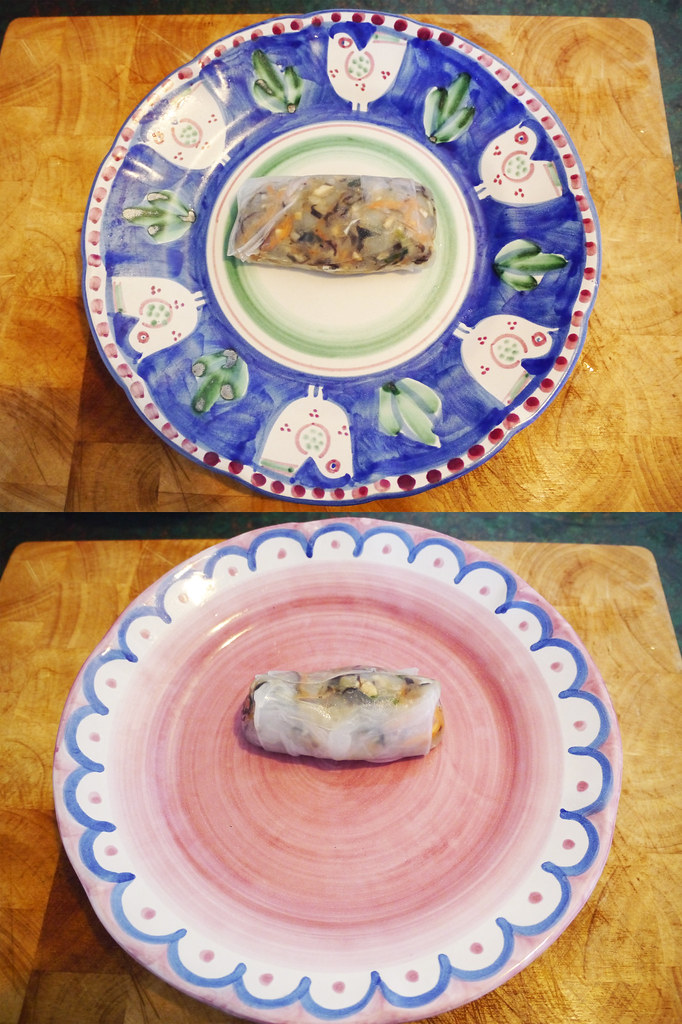
Ta-da! Ensure that the finished roll is neat and well sealed.
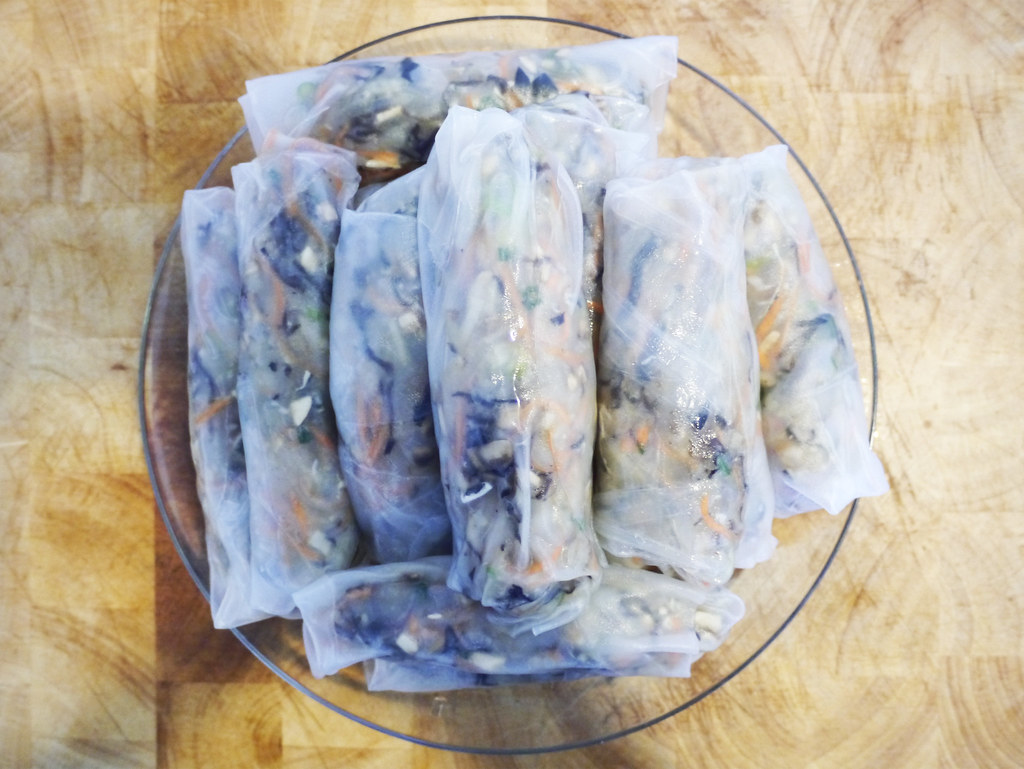
Rest the completed rice paper roll on a plate or clean towel. Do not let them touch each other. Repeat the process for the remaining sheets of rice paper and mixture.
Note: Do not rest the rice paper rolls on top of each other like I’ve done in the photo. They will stick to each other and even though they can be gently unpeeled from each other, you will risk them tearing.
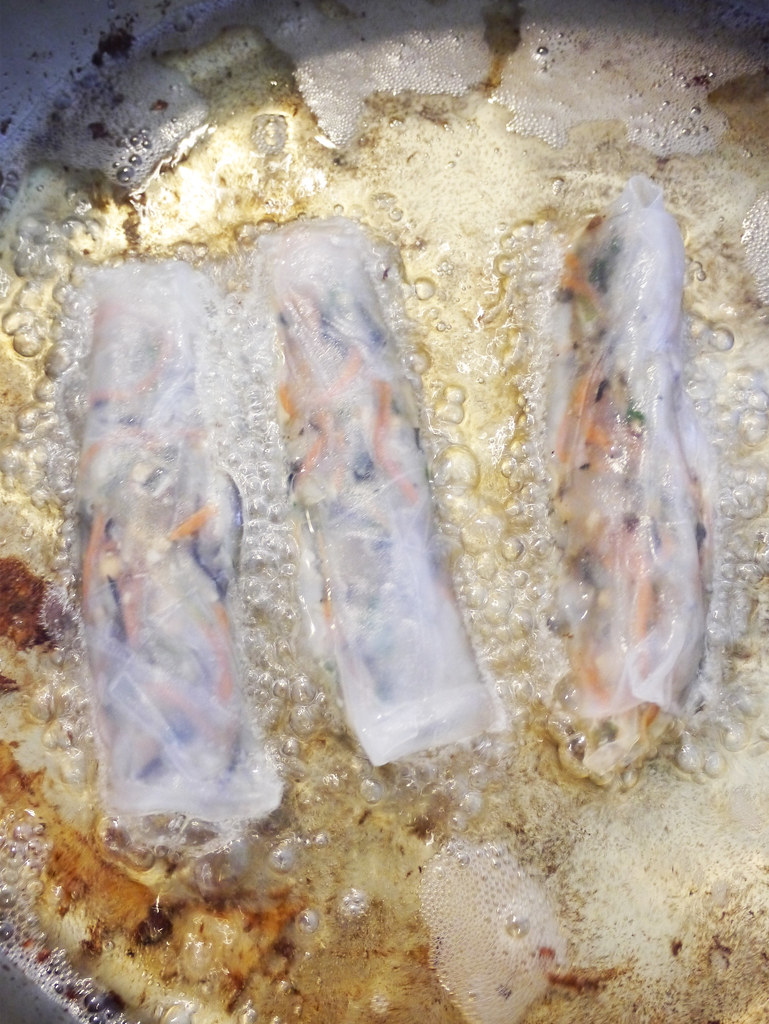
Fry the rice paper rolls: In a wok or fry pan, add enough cooking oil for shallow frying and bring to medium-high heat. Carefully add the rice paper rolls and cook them in batches for about 5 minutes on each side or until they’re golden brown and crunchy.
Note: I highly recommend you use an non-stick fry pan!
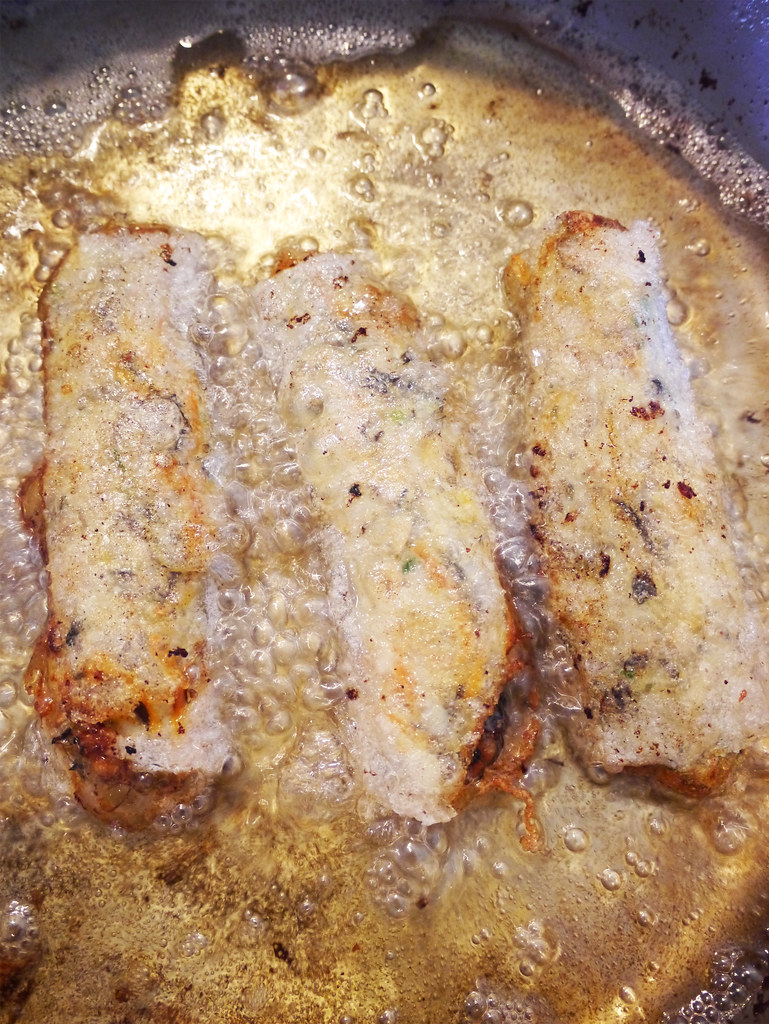
Ensure the rice paper rolls are evenly cooked by turning them over with tongs.
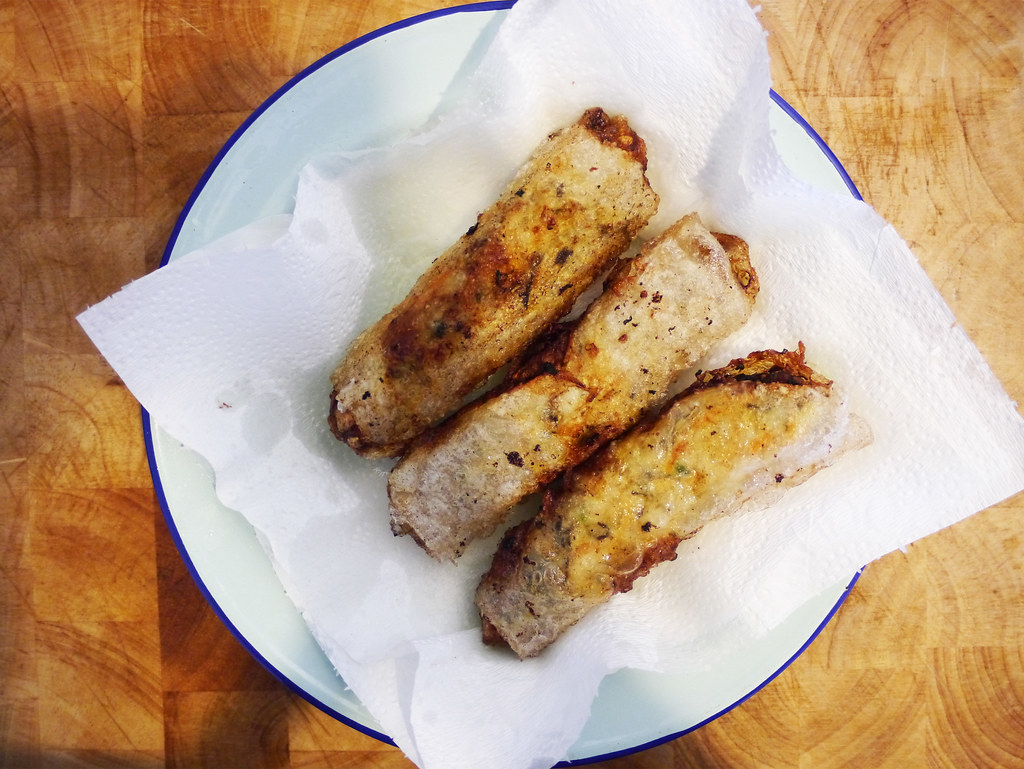
When they’re done, remove them from the oil and place them on a plate or tray lined with paper towel and let them drain.
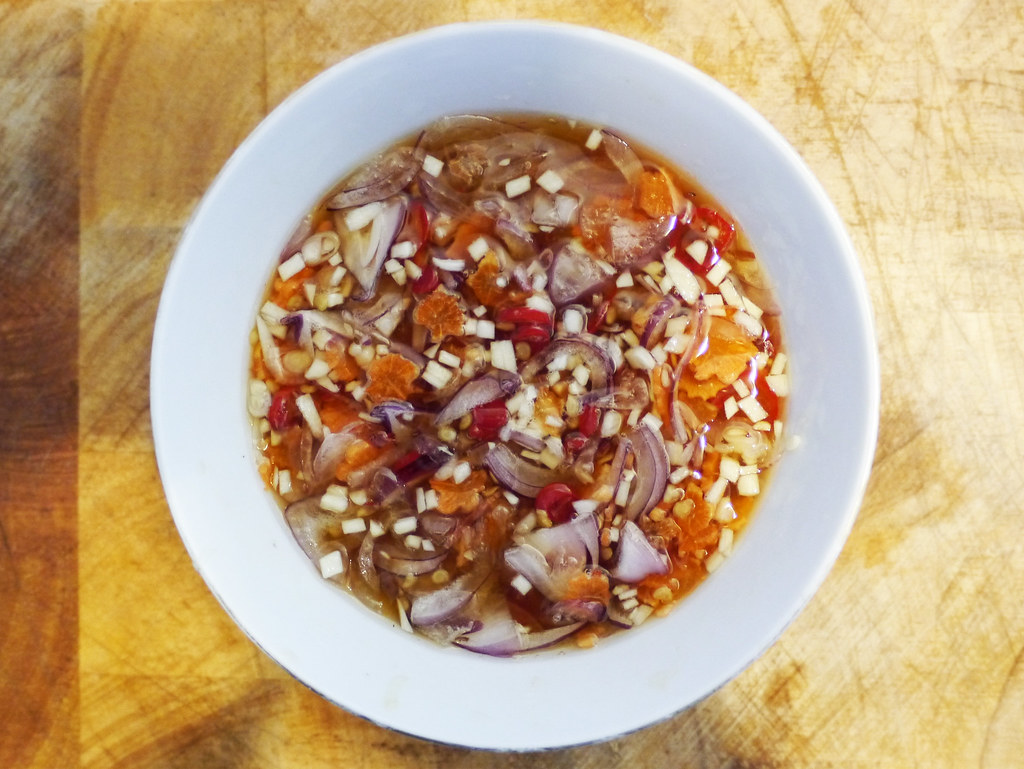
Make the dipping sauce: In a small serving bowl, add the fish sauce, sugar and squeeze in the lemon/lime juice. Gently stir until the sugar is dissolved. Then, add the chili, garlic, Asian shallot and sliced carrot ‘flowers’, and mix together. Adjust the flavour to suit your taste.
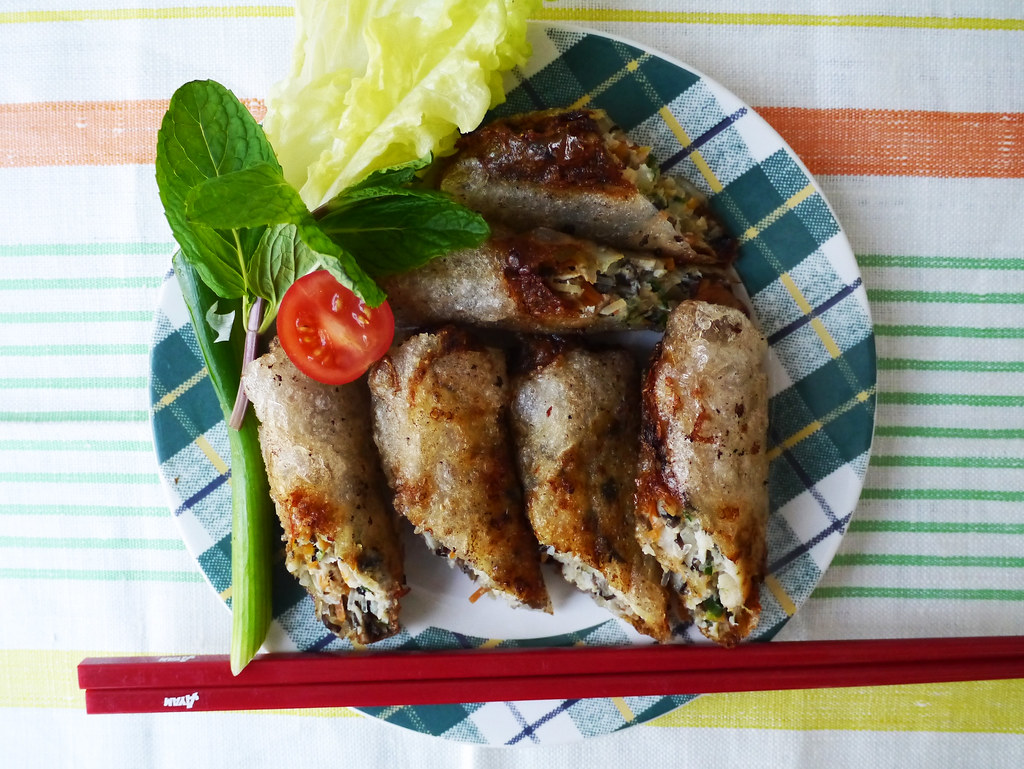
You can serve the fried rice paper rolls as they are (whole/cigars), or cut them in half or bite-sized pieces. Serve them with the delicious dipping sauce and a plate of mixed veg and herbs. Bon appetit!smile
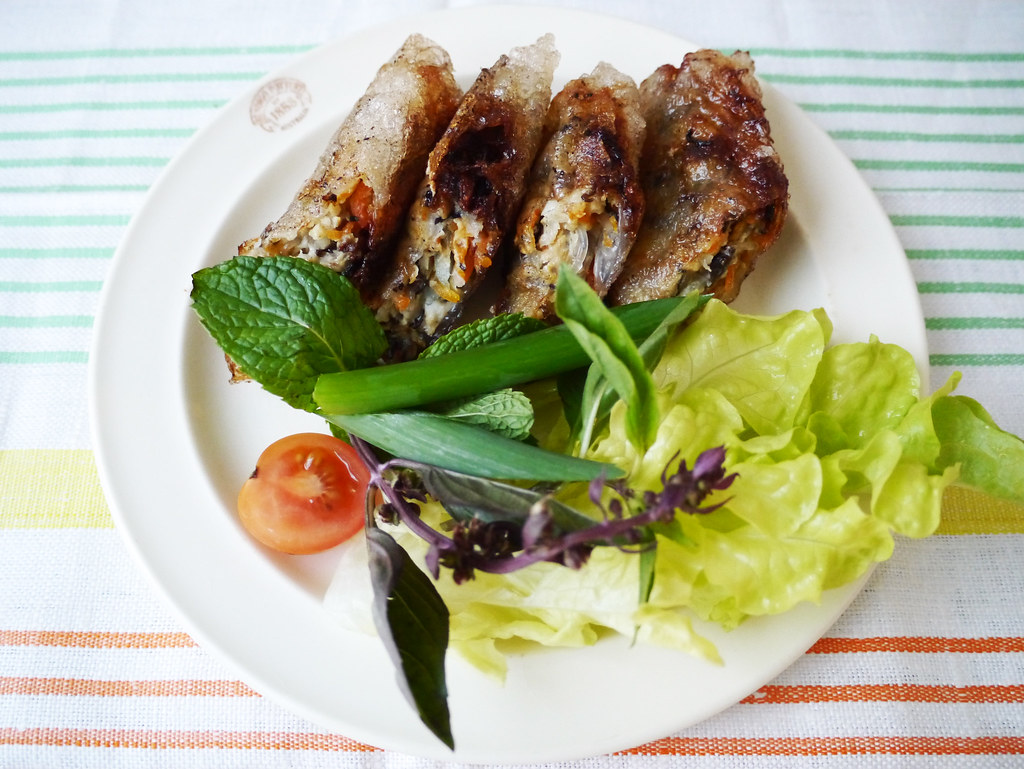
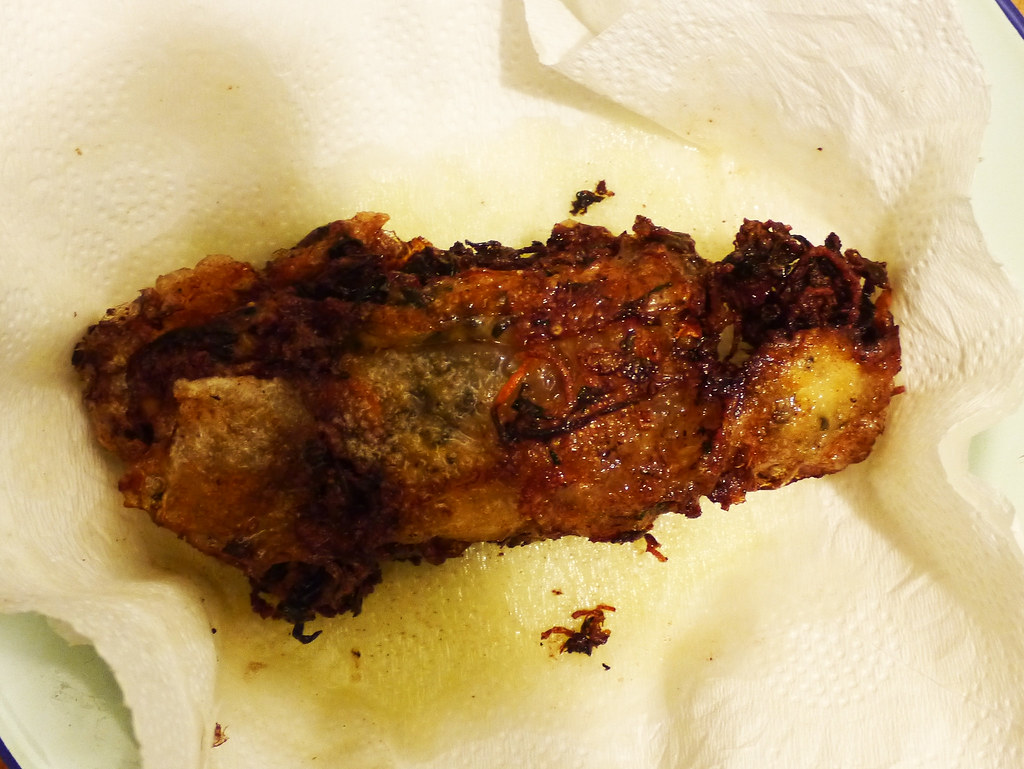
As an example, this roll had some mishaps along the way (particularly in the frypan) and did not make it on the plate for the final photo shoot. Although somewhat blemished with extra crispy and burnt bits, it still tasted delicious, if not more so.
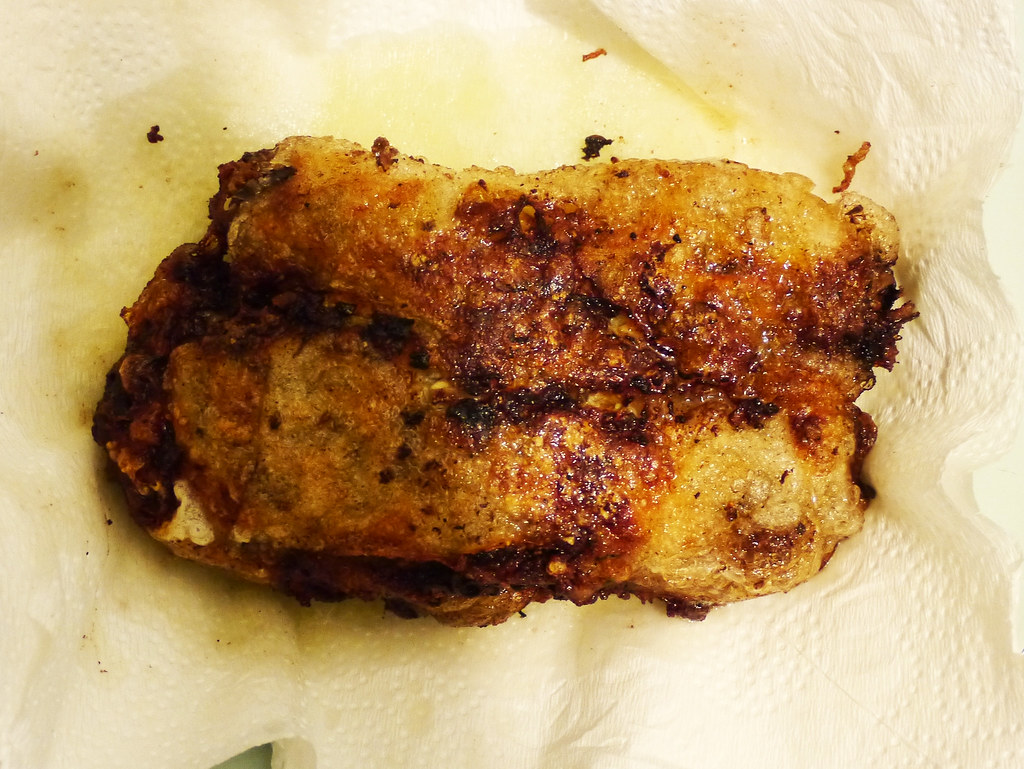
This specimen was extra special because it’s actually three rolls stuck and fried together. Extra big and took extra time to cook but was also extra delicious!
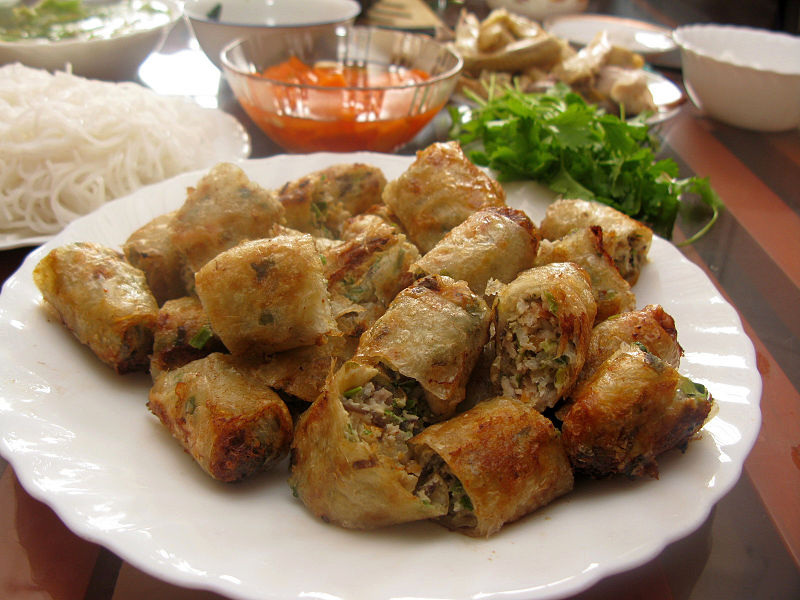
Here’s a plate of more appetizing, better made and better fried rice paper rolls. These ones are clearly what you’re aiming for if you want to give this recipe a try. If you’re shallow frying, I highly recommend that you use a non-stick frypan, fry a few quantities at a time, and don’t let the spring rolls touch each other. Good luck, have fun and enjoy!
- Rice paper rolls:
- 250 grams of fish meat (thinly sliced)
- 250 grams of prawn meat (thinly sliced)
- 1 spring onion (thinly sliced)
- 1 Asian shallot (thinly sliced)
- 1 onion (finely chopped)
- 1 garlic clove (finely diced)
- 1 carrot (shredded)
- ½ cup of water chestnuts (finely diced)
- ½ cup of bean thread noodle
- ½ cup of black fungus
- ½ cup of button mushrooms (finely chopped)
- 1 egg
- 1 Tablespoon of fish sauce
- 1 teaspoon of sugar
- pinch of salt
- ground black pepper
- 20 sheets of rice paper
- cooking oil for shallow frying
- Dipping sauce:
- 3 Tablespoon of fish sauce
- 2 Thai/bird's eye chili (thinly sliced)
- 1 garlic clove (finely diced)
- 1 Asian shallot (thinly sliced)
- 1 lemon/lime juice
- 1 Tablespoon of sugar
- Place the bean thread noodles and black fungus into separate bowls, add warm water and soak them for about 30 minutes to rehydrate them.
- Prepare the ingredients for the filling mixture: Remove the bones and skin (optional) from the fish fillets. Cut the fish fillets into 2 cm strips and then thinly slice into slivers. Remove the shell and devein the prawns, then thinly slice them into slivers. Wash, cut off the root and thinly slice the spring onion. Peel, cut off the root and thinly slice the Asian shallot and onion. Peel and finely dice the garlic. Peel and shred the carrot. Thinly slice the core ‘log’ of the carrot into ‘flowers’ and reserve to use in the dipping sauce. Finely dice the water chestnuts. Finely chop the button mushrooms.
- When the bean thread noodles are rehydrated, remove them from the water and cut them into 10 cm lengths with scissors. When the black fungus are rehydrated, remove them from the water and cut off their tough root section, then thinly slice them into slivers.
- Prepare the ingredients for the dipping sauce: Thinly slice the chili. Finely dice the garlic. Peel and thinly slice the Asian shallot. Cut the lemon into wedges. Put these ingredients aside. The sauce is best when made just before serving.
- In a large mixing bowl, add the fish, prawns, spring onion, Asian shallot, onion, garlic, carrot, chestnuts, bean thread noodle, black fungus, button mushrooms, egg, fish sauce, sugar, salt and pepper, and combine well together with a spoon. Put aside.
- Prepare a large bowl with warm water to soften the rice paper and a plate to wrap the rice paper on.
- Wrap the rice paper rolls (as per photo instructions): Slide a sheet of rice paper into the bowl of warm water to soften it. When it is softened, remove from the water and lay it flat on the plate. With the plate and rice paper in front of you, place about 1½ Tablespoon of the filling/mixture about ⅓ of the way up on the rice paper. Evenly spread the mixture out horizontally to form a log but not all the way to the edge. Fold the edge of the rice paper closest to you over the filling to cover it. Fold the left and right edges of the rice paper in to cover the sides of the mixture and form neat vertical sides. With your fingers firmly pressing the filling in place, gently and neatly roll the filling forward to the top edge of the rice paper to complete the roll. Ensure that the finished roll is neat and well sealed. Rest the completed rice paper roll on a plate or clean towel. Do not let them touch each other. Repeat the process for the remaining sheets of rice paper and mixture.
- Fry the rice paper rolls: In a wok or fry pan, add enough cooking oil for shallow frying and bring to medium-high heat. Carefully add the rice paper rolls and cook them in batches for about 5 minutes on each side or until they’re golden brown and crunchy. Ensure the rice paper rolls are evenly cooked by turning them over with tongs. When they’re done, remove them from the oil and place them on a plate or tray lined with paper towel and let them drain.
- Make the dipping sauce: In a small serving bowl, add the fish sauce, sugar and squeeze in the lemon/lime juice. Gently stir until the sugar is dissolved. Then, add the chili, garlic, Asian shallot and sliced carrot ‘flowers’, and mix together. Adjust the flavour to suit your taste.
- You can serve the fried rice paper rolls as they are (whole/cigars), or cut them in half or bite-sized pieces. Serve them with the delicious dipping sauce and a plate of mixed veg and herbs. Bon appetit!
Notes:
- Reference: http://en.wikipedia.org. ↩
- If you also like coriander and ginger, you can add just a small amount of each in the mixture to taste, or swap them with the other ingredients. ↩
- Both Ăn ngon nhé and Chúc ngon miệng translates to Bon appétit/Enjoy your meal in Vietnamese. According to Omniglot at least. ↩
